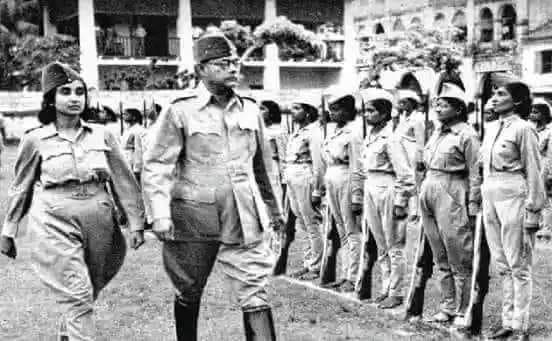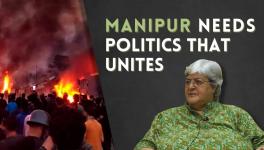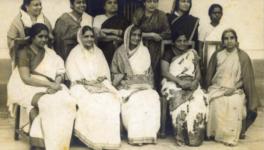Replug: Remembering Captain Lakshmi Sahgal

I belong to a generation that is fortunate enough to have met many men and women who fought in the Indian freedom movement. The one who left the deepest impression on me is Lakshmi Sahgal.
I met her first in 2002 in Kanpur. A few Burmese activists and I climbed up to her first-floor flat where we were told that she was attending to patients in her clinic. Those days, the communists had persuaded her to be their candidate for the Presidential elections and contest against APJ Abdul Kalam.
Later, she insisted I visit her clinic, a modest affair with patients lined up, waiting for their doctor.
I asked whether it was not a little tiring, practicing at her age. She said felt obliged to look after workers who had lost their jobs after the textile mills closed down. This was said in a matter-of-fact tone that hid her passionate commitment to her profession as a medical doctor and a revolutionary. Sahgal was a Lt. Colonel in the Indian National Army (INA), although she is known as Captain Lakshmi. She told me, in a quiet voice, that she had been promoted.
*****
At the clinic, we did not have to wait long. The moment Sahgal walked in, she asked what we wanted. Not in the manner of an officious bureaucrat but a person who wanted to get down to the business of revolution and change without wasting time. She was in her nineties but her voice was firm and her eyes had a no-nonsense sharpness.
We wanted her to release a book by Soe Myint, a Burmese activist who had hijacked a plane in November 1990. He had been on bail for over a decade and had established himself as a journalist.
Soe Myint and his friend Htin Kyaw Oo were students in Rangoon when a national uprising against military repression erupted. The Army cracked down on students, and many had sought refuge along the Thai-Burmese border. There, the two students decided to hijack a plane to draw global attention to the conditions of Burmese people under the long and brutal military rule.
On November 10, 1990, Myint and Kyaw Oo hijacked a Thai Airways Airbus 300 scheduled to fly from Bangkok to Rangoon and diverted it to Calcutta (now Kolkata), where they were welcomed as heroes. They were granted bail after more than 30 Members of Parliament signed a petition seeking their release. Kyaw Oo decided to leave the country, but Myint stayed behind and became a reputed journalist.
Due to persistent pressure from the military junta in Burma (now Myanmar), Myint was going to be put on trial. To campaign for himself, he had put together his writings in a book. His wife, Thin Thin Aung, and he were the activists who had brought me to Kanpur. They had been in touch with Sahgal as she had shown interest in Burmese activists living in India. The INA had taken shelter in Burma during the Indian freedom struggle and she was keen to show solidarity to Burmese activists taking shelter from military rule in India.
But now Sahgal was a Presidential candidate; and we were asking for support for a hijacker who was about to be put on trial. She did not even think twice and wanted to know when we would like her to be in Kolkata.
There was one other problem. The book had a foreword written by George Fernandes, the Indian defence minister, who was ideologically opposed to the communists and had joined hands with the Hindu nationalist party, the Bharatiya Janata Party (BJP). He had released the book in Delhi.
For Sahgal to release this book could prove embarrassing to the Left parties, who had put her up as a Presidential candidate against the BJP-backed Kalam. However, when I put up the problem before Communist Party of India (Marxist) leader Sitaram Yechury, he said the party would not object since it was a question of saving the life of a political activist. The punishment for hijacking under Indian law is death penalty or life imprisonment.
Unfortunately, Sahgal could not attend the book release. Later, we met in Kolkata at the CPI(M)’s headquarters. Myint and I were waiting in a room when she walked in and said, in an almost conspiratorial tone, “What can I do? Tell me quickly. I am an icon so they will listen to me.”
“Please take us to meet the Chief Minister.”
“You two just follow me. I am going to meet him right now.”
We found ourselves in the same room as Buddhadeb Bhattacharya and were introduced by Captain (actually, Lt. Colonel) Lakshmi Sahgal. I asked for his help to ensure that Myint was not convicted.
Soe Myint faced trial but was acquitted the following year.
*****
In some time, I found myself handling an even trickier case, of 36 Arakan and Karen militants who were engaged in armed resistance to the Burmese military junta. The Arakan and Karen are minority nationalities who had been demanding secession from the Burmese Union but had come together with the majority Burmans to resist the Junta.
The Indian intelligence services had been helping them and allowed them sanctuary in India in exchange for spying on Indian militants operating on the Indo-Burmese border. The military intelligence officer handling them was one Grewal who had turned rogue and betrayed them to the junta. Six Burmese freedom fighters had been killed in an operation code-named Operation Leech and 36 were in Alipur Jail, Kolkata.
Once again, we turned to Lakshmi Sahgal, and she suggested we form the Solidarity Committee for Burma’s Freedom Fighters. In its first publication Sahgal wrote, “… I feel very disturbed that Burma’s freedom fighters should be in an Indian jail because when we, the Indian freedom fighters, were in Burma during the anti-colonial movement we were treated with so much warmth and love in their country. I believe it is our duty to show the same hospitality and solidarity to the Burmese freedom fighters in the hour of their need. That is why we have constituted this Solidarity Committee to keep alive the friendship between Indian and Burmese peoples.”
The court had appointed Myint an interpreter and both of us were trying to get the United Nations High Commission for Refugees (UNHCR) to recognise the Arakan and Karen freedom fighters as refugees. The UNHCR refused unless it interviewed them and knew their identities. My clients had no identity cards and, obviously, no passports. If they were released, they would be liable to be arrested for not having identity cards.
I invented an identity card. I took photos of each of them, stuck them to pieces of paper and wrote on them the name, age and address in Burma of each prisoner. They signed their documents, which I attested, and then asked Sahgal to sign in her capacity as Chairperson of the Solidarity Committee for Burma’s Freedom Fighters. She took the 36 identity cards and signed them—no questions asked, no time wasted.
I went to Kanpur in 2009 to request Sahgal to write a foreword to my book, Rogue Agent, on Burmese prisoners. I saw another side of the living legend that day: a woman of taste. She and her daughter were sitting with a Kashmiri shawl-seller, choosing a shawl. Sahgal always dressed carefully and elegantly.
During that visit, I asked her something that had always troubled me: Why did the INA want one language and one script—was it the influence of Turkey’s first President, Mustafa Kemal Ataturk? Yes, she said. But is that how we could deal with cultural diversity in India? She was silent.
“Look at me,” I said, changing the tone of the conversation, “I’m a Kashmiri Pandit married to a Tangkhul Naga.” “And I am a Malayali married to a Punjabi living in Uttar Pradesh,” she said. I knew she was mulling over my question when I left. She did not give me a ready-made answer to a complex problem.
I used to enjoy our talks; which were never reminiscences about the past—always about the present and how struggle must go on in the future. As I left that day, she asked for a copy of the book and for me to come to Kanpur. “We have much to discuss.”
I sent the book, but could not go to Kanpur and then I learned that she was no more.
Sahgal did not give sermons. She did not have answers to all political questions but kept struggling for answers. On several occasions, she said that the only solution to all problems was struggle, relentless struggle. It is this belief that inspired courage in everyone she met. That is why she was known as a living legend and continues to be a legend, inspiration and source of strength to all who are struggling to keep alive the dream of India in which all Indian belong equally.
Nandita Haksar is a human rights lawyer and activist. The views are personal.
Get the latest reports & analysis with people's perspective on Protests, movements & deep analytical videos, discussions of the current affairs in your Telegram app. Subscribe to NewsClick's Telegram channel & get Real-Time updates on stories, as they get published on our website.
























